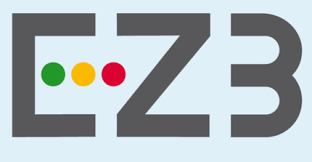¿Mutismo selectivo infantil en tiempos de COVID-19? A propósito de un caso.
Selective infant mutism in times of COVID-19? About a case.
Resumen
Se trata de un caso de preescolar femenina de 6 años de edad, procedente de la ciudad de Mérida, Venezuela, quien presenta mutismo selectivo, como síntoma asociado a su reacción adaptativa emocional dada por la migración de padre y se exacerba en los primeros meses de la pandemia por COVID-19, presentando cambios en el comportamiento cotidiano tanto de su hogar con en el ambiente escolar, social y familiar. El objetivo planteado es presentar de manera sistemática y metodológica todo el proceso de atención de un caso clínico, con abordaje médico psiquiátrico tanto individual (terapia de dibujo y de juego) como familiar (psicoterapia familiar). Se realizaron entrevistas preliminares de diagnóstico y de intervención presencial (al inicio) y luego vía online (cuarentena), aplicando técnicas psicológicas de terapia de juego y dibujo, y familiares. Concluyendo el proceso al lograr alcanzar los objetivos psicoterapéuticos planteados, como fue recuperar la conducta previa al mutismo, brindar el apoyo emocional afectivo a la niña y la familia, para que así confrontara de la mejor manera los factores desencadenantes como era la separación de su padre y la cuarentena por COVID-19.
This is a case of a 6-year-old female preschool from the city of Mérida, Venezuela, who presents selective mutism, as a symptom associated with her emotional adaptive reaction given to the migration of her father and is exacerbated in the first months of the COVID-19 pandemic, presenting changes in daily behavior both at home and in the school, social and family environment. The proposed objective is to present in a systematic and methodological way the entire process of care of a clinical case, with a psychiatric medical approach both individual (drawing and game therapy) and familiar (family psychotherapy). Diagnostic and intervention interviews were conducted in person (at the beginning) and later online (quarantine), applying psychological techniques of game and drawing therapy and family. Concluding the process by achieving the proposed psychotherapeutic objectives, such as recovering the behavior prior to the mutism, providing emotional support, to the girl and the family, so that she could confront in the best way the triggers such as the separation from her father and quarantine for COVID-19.
Palabras clave
Texto completo:
PDFReferencias
Asociación Estadounidense de Psiquiatría (2014). Manual diagnóstico y estadístico de los trastornos mentales (DSM-5) (Quinta edición). Madrid: Editorial Médica Panamericana.
Organización Mundial de la Salud (2000). Guía de bolsillo de la clasificación CIE-10: clasificación de los trastornos mentales y del comportamiento. Madrid: Editorial Médica Panamericana. https://apps.who.int/iris/handle/10665/42326
Dow, S., Barbara, B., Sonies, C., Scheib, D. y Moss, S. (1995). Practical guidelines for the assessment and treatment of selective mutism. Journal of the American Academy of Child and Adolescent Psychiatry, 34(7), 836-846.
Dummit, E., Klein, R., Tancer, N., Asche, B., Martin, J. y Fairbanks, J. (1997). Systematic assessment of fifty children with selective mutism. Journal of the American Academy of Child and Adolescent Psychiatry, 36(5), 653-660.
Gámiz, P., García, M. y Pacheco, C. (2020) ¿Es sólo mutismo? A propósito de un caso. Revista de psiquiatria infanto-juvenil, 37(3), 35-43.
Krysanski, V. (2003). A brief review of selective mutism literature. The Journal of Psychology, 137(1), 29-40.
Kumpulainen, K., Rasanen, R., Raaska, H. y Samppi, V. (1998). Selective mutism among second-graders in an elementary school. European Child and Adolescent Psychiatry, 7, 24-29.
Orgilés, M., Morales, A., Delvecchio, E., Mazzeschi, C. y Espada, J. (2020). Immediate psychological effects of the COVID-19 quarantine in youth from Italy and Spain [Internet]. PsyArXiv; abr [citado 23 de Septiembre de 2020].
Rodríguez M, y Saval, J. (2017). Tratamiento conductual basado en el juego de una niña con mutismo selectivo. Revista de Psicología Clínica con Niños y Adolescentes, 4(1), 51-57.
Shriver, M., Segool, N. y Gortmaker, V. (2011). Behavior Observations for Linking Assessment to Treatment for Selective Mutism. Education and Treatment of Children, 34(3), 389-410.
Wang, G., Zhang, Y, Zhao, J., Zhang, J. y Jiang F. (2020). Mitigate the effects of home confinement on children during the COVID-19 outbreak. The Lancet. 395(10228):945-7.
Yang Y., Peng, F., Wang, R., Guan K, Jiang T y Xu, G. (2020). The deadly coronaviruses: The 2003 SARS pandemic and the 2020 novel coronavirus epidemic in China [Internet]. Journal of Autoimmunity, 109. doi: 10.1016 / j.jaut.2020.102434
Yeganeh, R., Beidel, D. y Turner, S. (2006). Selective mutism: More than social anxiety? Depression and Anxiety, 23, 117-123.
Enlaces refback
- No hay ningún enlace refback.
Depósito Legal Electrónico: ME2016000090
ISSN Electrónico: 2610-797X
DOI: https://doi.org/10.53766/GICOS
| Se encuentra actualmente registrada y aceptada en las siguientes base de datos, directorios e índices: | |||
 | |||
 |  |  |  |
 |  | ||
 |  |  |  |
 |  |  |  |
 |  |  |  |
 |  | ||
![]()
Todos los documentos publicados en esta revista se distribuyen bajo una
Licencia Creative Commons Atribución -No Comercial- Compartir Igual 4.0 Internacional.
Por lo que el envío, procesamiento y publicación de artículos en la revista es totalmente gratuito.

